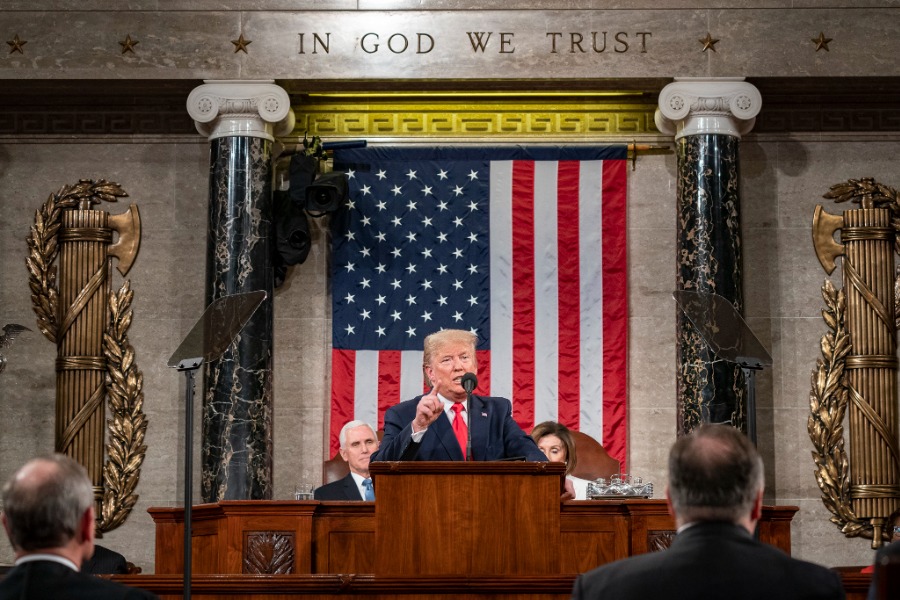Congress Is About To Vote On an AUMF Against ISIL, Quietly and Without Debate
I have not read the vast majority of the 2000-page Omnibus bill that contains the fiscal year 2016 Defense Appropriations bill. But presumably Representative Hal Rogers, the Chairman of the House Appropriations Committee, has read it.
Published by The Lawfare Institute
in Cooperation With

I have not read the vast majority of the 2000-page Omnibus bill that contains the fiscal year 2016 Defense Appropriations bill. But presumably Representative Hal Rogers, the Chairman of the House Appropriations Committee, has read it. And he says that the bill “includes funds to combat the real-world threat of the Islamic State of Iraq and the Levant (ISIL).” The funds are probably located in the “$58.6 billion in Global War on Terror/Overseas Contingency Operations (GWOT/OCO) funding” that is sprinkled around the bill. The Obama administration has previously made clear that GWOT/OCO funds are used in large part for the fight against ISIL, and it surely did so again in places I cannot now find.
If this bill clearly appropriates funds for the fight against ISIL, then Congress is about to vote for an authorization to use force against ISIL. As this OLC opinion (pages 332-339) explains:
[B]asic principles of constitutional law — and, in particular, the fact that Congress may express approval through the appropriations process — and historical practice in the war powers area, as well as the bulk of the case law and a substantial body of scholarly opinion, support the conclusion that Congress can authorize hostilities through its use of the appropriations power. Although it might be the case that general funding statutes do not necessarily constitute congressional approval for conducting hostilities, this objection loses its force when the appropriations measure is directly and conspicuously focused on specific military action.
But wait, you might ask, what about Section 8(a)(1) of the War Powers Resolution? It provides that congressional authorization for uses of “shall not be inferred from any provision of law …, including any provision contained in any appropriation Act, unless such provision specifically authorizes the introduction of United States Armed Forces into hostilities …” So how can an authorization to use force be inferred, at least for purposes of the WPR, from appropriations for GWOT/OCO operations? The answer, contained in the OLC opinion cited above, is that “section 8(a)(1) does not bar later Congresses from authorizing military operations through appropriations,” because the Constitution forbids an earlier Congress from binding a later one. OLC further concluded that WPR Section 8(a)(1) operates like a rule of construction against reading later appropriation laws to constitute an authorization of force unless the later Congress “clearly intends” to do so, “in which case the WPR cannot be read to deny legal effect to that clear intent." This is a debatable interpretation of the WPR, but it is at least a plausible one (I have come to think it is correct), and it is clearly the Executive branch view of the law.
The conclusion that funding for the fight against ISIL constitutes an authorization of force against ISIL is unaffected by Sections 8122 and 9019 of the Bill. These Sections provide that the “funds made available by this Act may not be used with respect to Iraq and Syria “in contravention of the War Powers Resolution (50 U.S.C. 1541 et seq.), including for the introduction of United States armed or military forces into hostilities in [Iraq and Syria], … or into [Iraqi or Syrian] territory, airspace, or waters while equipped for combat, in contravention of the congressional consultation and reporting requirements of sections 3 and 4 of that law (50 U.S.C. 15 1542 and 1543).” These Sections simply underscore that the WPR consultation and reporting requirements in WPR Sections 3 and 4 remain in place despite the use of funds for force in Iraq and Syria. I do not believe they are intended or can be construed to ban the use of funds for force in Iraq and Syria (that would be news!), or to otherwise affect the authorizing effect of the funding. If anything, since ISIL is the main force we are fighting in Iraq and Syria, these provisions, by insisting that the consultation and reporting requirements continue to apply with respect to uses of force there, confirm that the funds in question are directed toward ISIL. The same basic points apply to the bromide in Section 8106, which provides that “[n]one of the funds made available by this 18 Act may be used in contravention of the War Powers Resolution.”
I thus think that at from the Executive branch perspective, and probably objectively, Congress is about to vote on an authorization of force against ISIL for at least the duration of this funding. Vote again, I should say, since (as I have explained before) Congress likely authorized the use of force against ISIL when it approved the President’s previous request last year for “Overseas Contingency Operations” funding.
Of course, Congress is not calling its funding an authorization for the use of force against ISIL, much less debating the authorization. But make no mistake: The funding to continue the war against ISIL is an authorization of force against ISIL, albeit a quiet one, designed not to attract attention.



.jpg?sfvrsn=6cdd11de_5)

